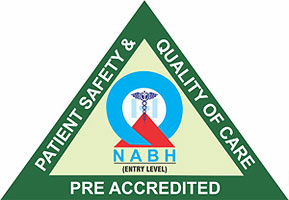+91-7291089674 (Bandra)
+91-7291092120 (Kandivali)




September 7, 2022 | Author: Admin
Our sight develops rapidly during the principal years of life. Let’s learn more about eye development and eye testing in infants, babies, and small kids.
Parents can support visual improvement with a lot of eye-to-eye contact by utilising toys of different colors, having mobile toys over the bed, and making sure that their eyes follow a moving toy accurately. An eye assessment ought to be done every six months and earlier in the event that there are indications, or there is a family history of eye conditions.
For young infants fixing and following light accurately provides a gross estimate of visual development. For finer testing, grating acuity charts may be used by a trained orthoptist/ paediatric optometrist.
Toddlers are too young to understand or convey a vision problem. Signs to pay special attention, includes:
As children develop and turn out to be more active, eye conditions are bound to happen. Common issues among young children include the following:
In the event that your kid has a squint or a droopy eyelid, they could have a ‘lazy eye.’ regular eye assessments will guarantee early diagnosis and a reasonable course of treatment.
Known as ‘cross eye’, one eye gazes directly ahead, and the other eye looks away. If the event is spotted early enough, wearing a patch for a period of time or vision therapy exercises will help to rectify the issue.
Assuming your child gets confused while reading or battles to read easily, they might have astigmatism (blurred vision). Some simple reading exercises at an optician should be possible to test their vision. Squinting during vision testing might be diagnostic.
In the event that your child can see objects at a distance clearly but struggles to focus on objects when they are close up, this could be an indication of long-sightedness. Your child might complain of headaches and also have tired eyes as they need to consistently strain to see things clearly. Assuming you notice these signs, you can have their eyes checked by an optician, regardless of whether they can’t read or identify letters.
In the event that your kid suffers from short-sightedness, they experience difficulty in seeing things clearly from a distance. You can recognise indications of short-sightedness by checking your kid’s activities, do they sit near the TV, do they need to be near objects to be able to distinguish them? Eye tests should be done regardless of whether your youngster isn’t reading or cannot identify letters.